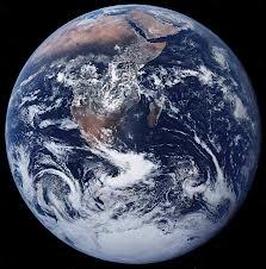
Seeing Nature through Different Lenses: Metaphors that Matter
Any two of us, taking a walk in the same woods, may see it with entirely different eyes. Not only our fantasies and emotions but our very perceptions of the natural world are shaped by archetypal stories deeply embedded in our imaginations – so deeply embedded that we may have little conscious awareness of them. Yet these are the root metaphors in which our opinions and choices are grounded. In her lecture, Dr. Hodges presents a bird’s eye view of three or four of these root metaphors, where they are in conflict, and where common ground might be found.
The word archetypal tells us that this topic has two levels, each important in its own way: There is the individual level, at which each of us has our own personal relationship with the natural world. But there is also the collective level, where broad historical trends unfold. And the two cannot really be separated. Many of us struggle with how to reconcile life in our industrialized society with a viable relationship with the natural environment. Others have a personal feeling for nature that seems uncomplicated and right, with no need for deeper understanding. But how are we to enter into genuine dialogue with those who hold conflicting views? Public debate on environmental issues often hits a wall, with opposing sides stuck in polarized positions. And some feel that they have no voice at all, so hopelessly at odds with the perspective championed by those in power. With the rise of the modern environmental movement in the 1960’s and ‘70’s, a growing chorus of voices has insisted that our attitudes toward nature must change. But change only comes when we touch into the place of deep conviction, what Jung called our “myth”. What are our myths with respect to the natural world? Where do they come from, and where are they leading us?
Not only is the environmental crisis challenging old attitudes, but our knowledge and understanding of the natural world is expanding at a dizzying rate, faster than the average person can keep up with. Collective attempts to address environmental concerns may at times seem woefully inadequate, but they are only the tip of the iceberg: The fact is that Western culture is in a rapid and profound process of re-imagining “nature”. Jung understood this, and understood that we are all being swept along towards a future which we cannot yet imagine. But he also saw this as an individual process, involving the kind of creative imagination which goes on at the deepest levels of the psyche. Such creativity cannot be forced or engineered, but we can clear a space for it by clarifying and owning where we are now. In her lecture, Dr. Hodges offers simple terms and evocative images as resources for this work.
Any two of us, taking a walk in the same woods, may see it with entirely different eyes. Not only our fantasies and emotions but our very perceptions of the natural world are shaped by archetypal stories deeply embedded in our imaginations – so deeply embedded that we may have little conscious awareness of them. Yet these are the root metaphors in which our opinions and choices are grounded. In her lecture, Dr. Hodges presents a bird’s eye view of three or four of these root metaphors, where they are in conflict, and where common ground might be found.
The word archetypal tells us that this topic has two levels, each important in its own way: There is the individual level, at which each of us has our own personal relationship with the natural world. But there is also the collective level, where broad historical trends unfold. And the two cannot really be separated. Many of us struggle with how to reconcile life in our industrialized society with a viable relationship with the natural environment. Others have a personal feeling for nature that seems uncomplicated and right, with no need for deeper understanding. But how are we to enter into genuine dialogue with those who hold conflicting views? Public debate on environmental issues often hits a wall, with opposing sides stuck in polarized positions. And some feel that they have no voice at all, so hopelessly at odds with the perspective championed by those in power. With the rise of the modern environmental movement in the 1960’s and ‘70’s, a growing chorus of voices has insisted that our attitudes toward nature must change. But change only comes when we touch into the place of deep conviction, what Jung called our “myth”. What are our myths with respect to the natural world? Where do they come from, and where are they leading us?
Not only is the environmental crisis challenging old attitudes, but our knowledge and understanding of the natural world is expanding at a dizzying rate, faster than the average person can keep up with. Collective attempts to address environmental concerns may at times seem woefully inadequate, but they are only the tip of the iceberg: The fact is that Western culture is in a rapid and profound process of re-imagining “nature”. Jung understood this, and understood that we are all being swept along towards a future which we cannot yet imagine. But he also saw this as an individual process, involving the kind of creative imagination which goes on at the deepest levels of the psyche. Such creativity cannot be forced or engineered, but we can clear a space for it by clarifying and owning where we are now. In her lecture, Dr. Hodges offers simple terms and evocative images as resources for this work.